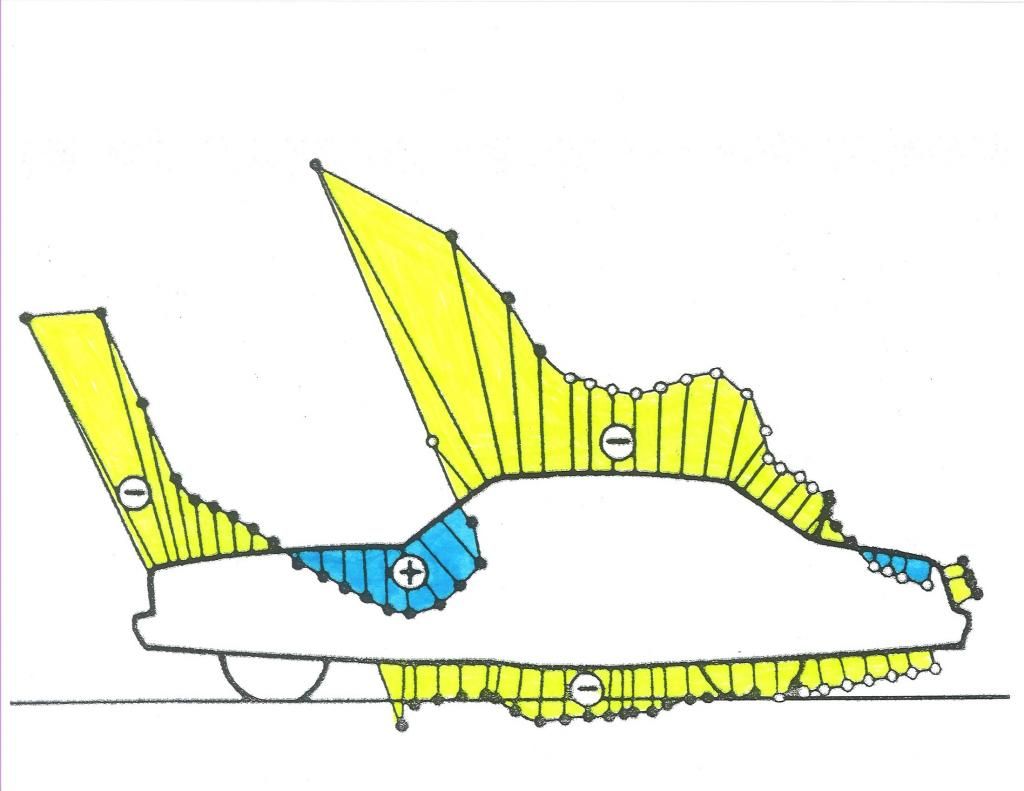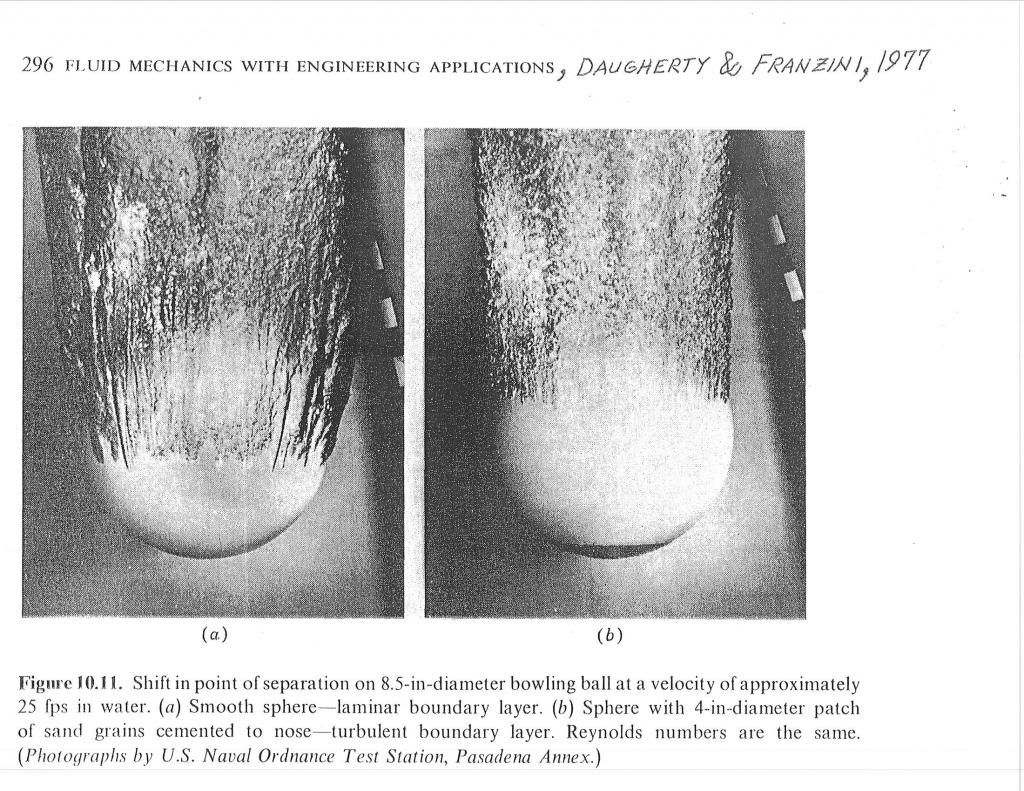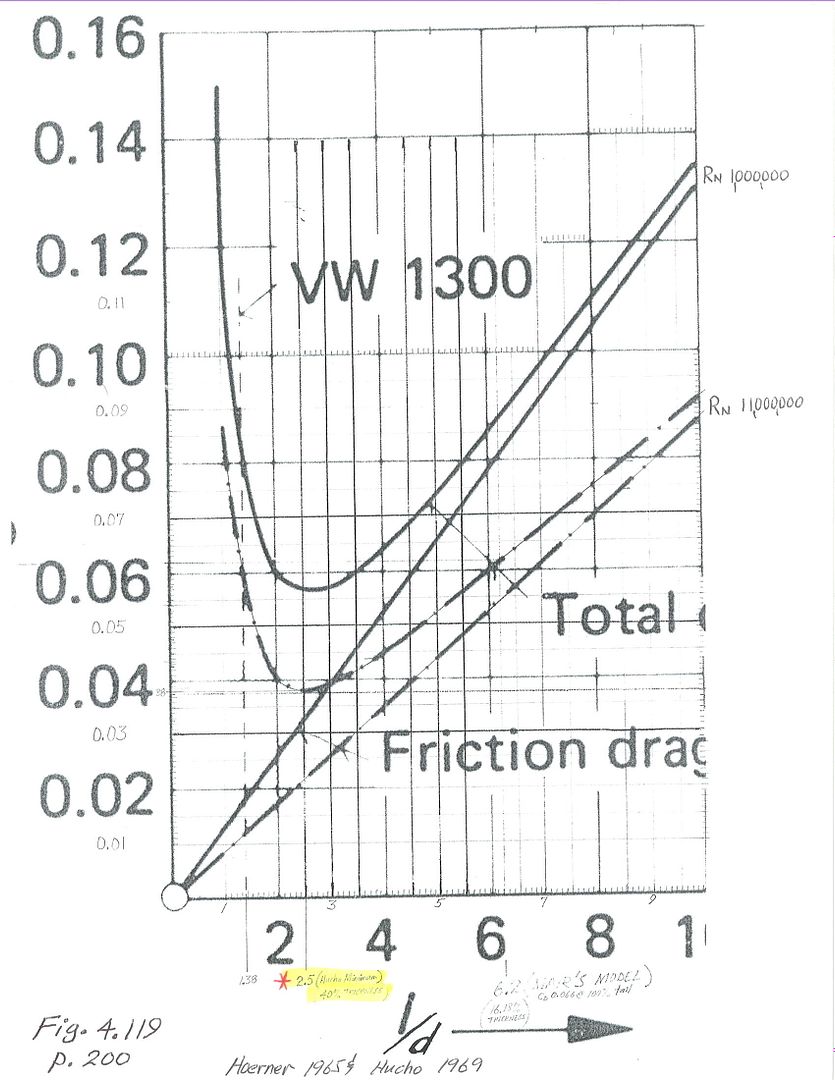Quote:
Originally Posted by CFECO

Speed has No effect on flow or attached flow?
|
*the air adjacent to the car's body surface is always at zero velocity because of air viscosity.
*there's no reason for the air to stick to the surface unless there's a favorable pressure gradient around it.
*if it can,the air will always flow towards the lowest pressure area.
--------------------------------------------------------------------------
*for a smooth car,at low speed,as the air that was accelerated around the body gets to the windshield area,it's at it's fastest velocity and encountering the lowest pressure on the car,according to the Bernoulli Theorem,and wants to stay right there.

*As the flow slows onto the roof,it's pressure begins to build back up,which requires that it slow down.
*But the air against the body is already at rest and it can't 'slow' anymore,and will begin to move forwards towards the low pressure.As it does,it rolls into eddies and swirls,lifts off the car,and blooms into full-blown turbulence.
Here you can see this at the left with the bowling balls

If you get the car moving fast enough,the boundary layer flow will transition over to a turbulent boundary layer which can strafe kinetic energy into the stationary air and pin it down, where it cannot flow forwards;as long as the strafing angle isn't too steep,otherwise the kinetic energy just ricochets off the air as a flat stone over water.
*It's a Reynolds number effect,named for Osborne Reynolds who published on the effect in the 19th Century.
In the following table you'll see two Reynolds numbers along the right hand margin and you'll notice that the Cds are lower at the higher Reynolds number.

*And Reynolds number is a function of length and velocity.
-------------------------------------------------------------------------
*for a typical automobile,it's length is sufficient such that at around 20-mph,it will have a full,turbulent boundary layer and it's drag coefficient will be constant up to transonic velocity,which for cars can be as low as 250-mph.
*the only exception is with cars which have a rear end with angles in the range of around 28-32 degrees downslope.These angles produce a 'bi-stable' flow phenomenon in which at one instant the car has a fastback wake,then in another instant a squareback wake.The oscillation creates a booming and could actually lead to structural failure if weakly constructed.
*a 'tearing edge' can fix the situation,a 1930s invention by Koenig-Fachsenfeld and used today on rear bumper fascias.
